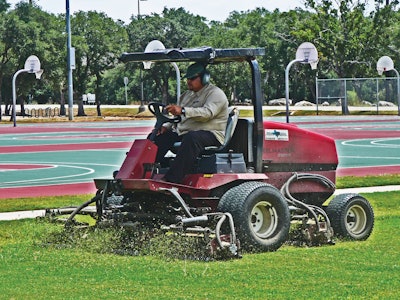
We’ve all heard stories about the guy who was thrown from his riding mower. Or the guy who lost a finger. Or a foot. Not urban legends—these stories are true, and they happen every year.
According to the Annals of Emergency Medicine, mowers result in more injuries than any other equipment, with more than 75,000 injuries—and a few fatalities—each year. Stay safe with these tips:
- Inspect machines and read operator manuals prior to use. Find any lost manuals online at manufacturer websites.
- Never operate a mower if its safety guards or seat belt are missing or damaged.
- Protect yourself with safety goggles or glasses with side shields, steel-toed footwear, hearing protection, long-sleeved shirts, pants and gloves.
- Before mowing, scout the site and remove potential hazards like trash, branches or loose bricks. Watch for low-hanging wires that can be caught in rollover protective structures (ROPS).
- With ride-on mowers, drive up and down—not across—slopes, and do not stop, start or turn on a slope. Stop the engine and set the parking brake before dismounting.
- Before refueling, let the engine cool and ensure the nozzle is in contact with the rim of the tank while you add fuel.
- NEVER unclog a mower deck with your hand or foot. Turn off the engine, wait until all moving parts stop and then use a long instrument. Stored energy trapped in the blade mechanism could cause it to spin rapidly once the block is removed.
- Avoid mowing wet grass and don’t mow too close to water, retaining walls or drop-offs.
- Last but not least, drive at a reasonable speed.
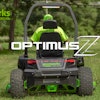


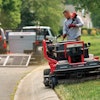
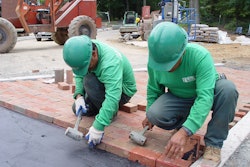

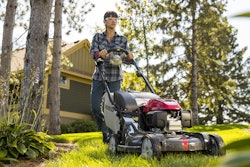
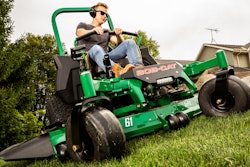
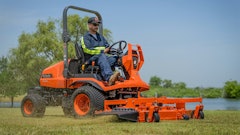







![Gravely Pro Turn Mach One My23 Dsc03139 Edit 1200x800 5b2df79[1]](https://img.greenindustrypros.com/mindful/acbm/workspaces/default/uploads/2025/10/gravely-pro-turn-mach-one-my23-dsc03139-edit-1200x800-5b2df791.BucBnDoN22.jpg?ar=16%3A9&auto=format%2Ccompress&fit=crop&h=135&q=70&w=240)



